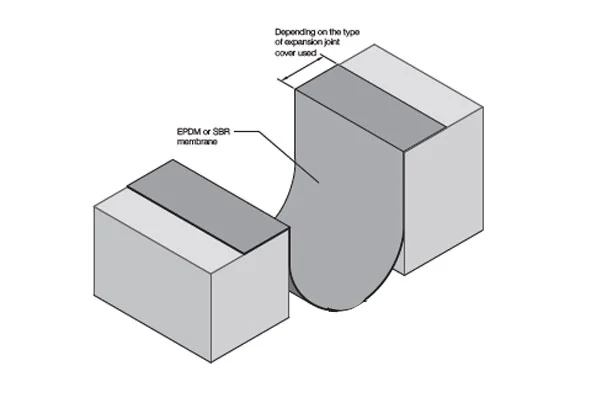
What is the role of BIM software and models in the data-driven future of AI agents and workflow automation?
For years, the BIM model file has been treated as the single source of truth, the place where geometry and information meet. Yet the reality is changing fast.
As construction processes become increasingly digital, connected, and autonomous, it seems the model file itself is giving way to agentic data ecosystems: distributed environments where BIM data is just one of many linked sources feeding analytics, automation, and AI reasoning.
The vision
BIM models accessible in a Common Data Environment could include all the data of a building or infrastructure. It means you have both the geometry and attribute data in files you control, serving as a single source of truth.
In that scenario, a BIM model is a true data asset, full of structured attributes ready for automation, analytics, and AI.
That has been the goal since the 1980s when the term “building information modeling” was first introduced. However, the industry seems uncertain about whether this is a goal worth pursuing. That’s because BIM software mainly supports the design process: geometric collaboration among designers and the efficient extraction of 2D drawings. Data remains a secondary focus.
Recreation instead of reuse
There are no technical barriers to adding any attribute data into BIM models. Designers do so when it fits their current needs, ideally making it automatic. But they don’t always consider data uses outside their own organization unless the client specifically requests it and agrees to pay for the extra work and attention.
As a result, I’ve seen general contractors who want to use a designer’s BIM model for cost estimation, for example, recreate it using their own specs and attribute data. Trade contractors, product distributors, and manufacturers also recreate data because it’s either nonexistent or not useful in the original design files.
Another handover that disrupts the BIM workflow occurs between the contractor and the building owner. Therefore, the vision of life-cycle BIM often does not materialize in most cases.
Geometric BIM is still going strong
Regardless of its shortcomings, the use of BIM is increasing and is now mainstream in many countries, including the Nordics.
Although every BIM expert reminds us that BIM is more than just 3D modeling, many users outside of design offices find the geometric models the most useful. They serve as the geometric backbone of digital twins, are elemental to visualizations, and support on-site communication.
One building services contractor I talked to told that their installation teams routinely use BIM models in an augmented reality app on their smartphones. It helps them plan and inspect installations.
Minimum Viable Data?
So, if the geometric nature of BIM adds value, how can we solve the data challenge?
The idea that has gained traction is to admit that BIM tools are too complex for most non-designer users when it comes to data storage and interaction. Anyway, authoring tools were not designed to serve ERP or other corporate systems.
BIM models should contain the “minimum viable data,” and link programmatically to other data sources and systems that serve business workflows.
Achieving this “minimum viable data” requires clear definitions and consistent terminology. Emerging open standards, such as buildingSMART’s IDS and bSDD, address this by making information requirements explicit and ensuring that attributes are interoperable across tools.
Software developers recognize the need
Autodesk has recognized the need to access and connect data outside of BIM models. Its “AEC Data Model API” is an API layer, part of their Autodesk Platform Services, formerly called “Forge,” that enables direct cloud access to detailed design data without opening the desktop Revit. Initially, access to the Revit model data (elements & properties) is read-only.
Autodesk describes this as a move from “monolithic files” to “granular object data,” enabling more real-time updates, change-tracking, and automation rather than just file exports. The promise is that you can query “all doors larger than X meters” or “all HVAC equipment of type Y with status Z,” and feed that into, for example, a procurement or scheduling AI process.
Other BIM companies are making similar moves. Bentley, for example, emphasizes openness and the ability to integrate multiple data types on its iTwin platform.
The emerging data ecosystem
Several technology trends are now redefining how we interact with BIM data.
Now that we’re entering the age of agentic AI, easy, secure access to data is becoming ever more critical. I’ve written about MCP (Model Context Protocol), an open standard that enables AI agents to interact with MCP servers to retrieve and update data. Another protocol, A2A, standardizes agent-to-agent communication.
The technology remains in the pilot and early adoption phase, and there are still security concerns. However, it opens the door to a future where cross-organizational data sharing is AI-driven and managed by autonomous agents.

Another technology in the emerging ecosystem is the data lake. It is a centralized repository that stores all kinds of structured, semi-structured, and unstructured data at scale in their raw/native formats. Instead of using predefined and “hard-coded” schemas, it uses a schema-on-read approach. You don’t need to decide upfront how the data will be used.
A data lake can handle huge volumes and diverse types of data, which can later be processed and analyzed with different tools (SQL engines, AI/ML frameworks, and visualization dashboards). This makes it especially useful in the AEC industry.
From modeling to management
Traditionally, the “M” in BIM stood for “Modeling,” implying a digital representation of geometry and related data. But as the industry shifts toward data-driven workflows, lifecycle integration, and AI-enabled automation, many practitioners argue that it should better reflect “Management.”
What matters less is the model file itself, and more the information it contains, how it is managed, and how it is used beyond the design and construction phase.
As AI becomes embedded in daily workflows, the quality and accessibility of BIM data will determine how far automation can really go. Geometry may have started the revolution, but information management will finish it.
For AEC firms, the task now is to treat BIM as the structured source of data while building APIs, governance, and quality controls that enable AI and automation to safely use it.








